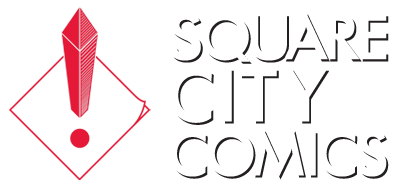
My name is Em and I've been creating comics for as long as I can remember. My main project is Jikoshia, a fantasy webcomic series. I draw and ink analog for the most part, but have slowly been getting the hang of digital techniques.
For this post, I'd like to talk to you about templates. As any cartoonist can tell you, a template is helpful not only for maintaining a consistent pace in your comic, but also makes it a whole lot easier (and often cheaper) if you ever decide to go to print. Unless, of course, you prefer to use Scott McCloud's Infinite Canvas concept, in which case you can probably disregard this whole post.
There are tons of places you can get pre-made templates from, but they can get costly. I'm pretty cheap, so I just make my own templates using 11x14 marker board (I also use both sides of the paper, but I digress). Going this route, I only end up spending about 22 cents per page as opposed to 53 cents or more (not accounting for that whole double-sided thing).
So here's the set up: I have my 11x14 paper, my big ruler, a non-photo blue pencil, and a proportion wheel.
"Proportion wheel?" you ask. "I'm working at my printer's size, why would I need any proportions?"
Your standard, pre-made template is 11x17. That's twice the size of a normal comic page. They're made that big because once you shrink them down, a lot of the mistakes you made will be less glaring or disappear entirely. You made no mistakes, you say? Liar liar, pants on fire!
Since I go the cheap route and use 11x14 paper, my proportions don't come out to an east 2x actual size. It turns out this paper puts me at about 1.25x actual page size. Less than ideal, I know, but still larger than the final size. To compensate, I scan in at 600 dpi (which has other perks, but that's for a later discussion)
Set your wheel accordingly, and take note of where your guidelines should be. You need to worry about your trim line (where the page will be cut), your margins (how far important objects need to be away from the trim line to print right), and your bleed (how far and image that goes off the page needs to be to print right). Mark your paper and draw your guides using your non-photo blue pencil. Why non-photo blue? Well, it used to be because that was a color scanners and photocopiers wouldn't pick up. These days, a decent scanner will at least pick up traces of the blue (while still allowing it to be easy to take out of the scan when no longer needed). For me, it's easier to read the blue as a border than normal pencil lines. Also, it smudges waaaaay less than regular pencil (very important for a lefty like me).
And you're done! I realize this is probably the most boring part of the comicing process, but it can also be very meditative. Great for those days when you just can't seem to get the pencil to work right. While you're at it, why not grab your thumbnails and pencil in some panel borders? By making your own templates, you'll save yourself some money and still have something to do on those off days of drawing.
Or you can take the easy route and just buy the templates...

.jpg)


No comments:
Post a Comment